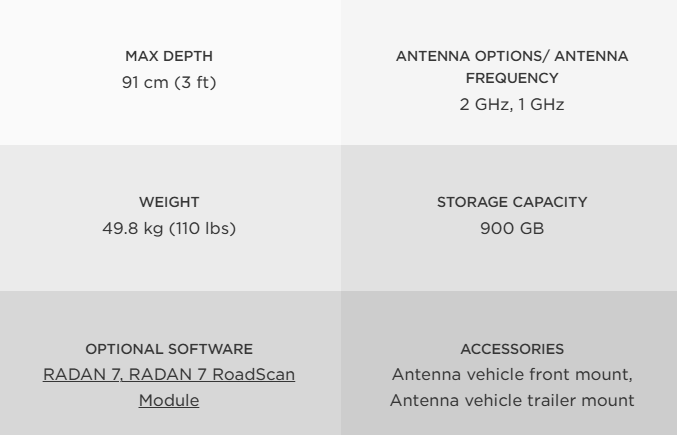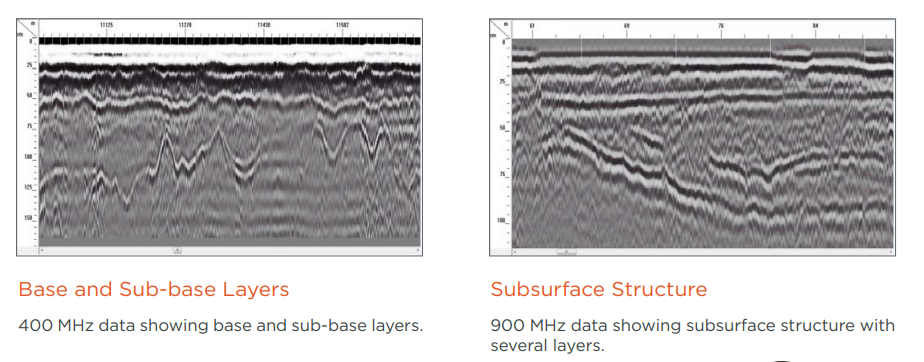RoadScan™ 30
The RoadScan™ 30 system is a non-destructive evaluation tool for quickly and accurately
determining pavement layer thickness. RoadScan 30 can collect data at high resolution
not obtainable using other labor-intensive methods. RoadScan data can be acquired at
highway speeds, eliminating the need for lane closures and providing a safer working
environment.


The RoadScan 30 is typically used to:
NDT road evaluation
Measure pavement thickness
Evaluate base and sub-base conditions
Measure asphalt prior to milling operations
Determine areas to core

The RoadScan Advantage
The RoadScan system, with available accessories, includes
all the components necessary to evaluate subsurface
layers of roads. The SIR 30 control unit is a configurable
multi-channel system, allowing users the ability to operate
one to eight antennas simultaneously at posted speeds.
With RoadScan, users can collect data every
6 inches instead of coring every few thousand
feet on the road. RoadScan provides more
consistent information about the pavement
thickness and subsurface conditions than
traditional coring, leading to better planning
and budgeting for repairs.
ROADSCAN FEATURES
Non-Destructive Pavement Testing
RoadScan can quickly collect pavement layer thickness data.
This system acquires data at high speeds, which eliminates
the need for lane closures and provides a safer working
environment. Evaluating failures of the road subsurface to
ensure the road is repaired in the correct spots will help
reduce coring.
Quantifiable Data: Ground penetrating radar (GPR) offers users a quick and
effective way to determine pavement layer thickness.
Inspecting with RoadScan prior to beginning a project will
ensure better inspection and a fuller picture of the road from
sublayer to top mat. Since this system can see 18 inches
down to evaluate base and sub-base layers, you’ll be able
to identify potential issues that aren’t visible on the surface.
Pavement Evaluation Results: Data can be easily exported as ASCII output files for simple data transfer to
other software programs. Or, migrate data results as a Google Earth™ .kml file
for enhanced visualization.
ROADSCAN FLEXIBILITY
Using the SIR 30 as the foundation of the RoadScan system, users can obtain additional information
with accessory antennas. Many RoadScan users elect to use the 900 MHz or 400 MHz antenna to
obtain additional information on base or sub-base layers.


 Enquiry:hkmarketing@epc.com.hk
Enquiry:hkmarketing@epc.com.hk  Whatsapp Enquiry: +85261990717
Whatsapp Enquiry: +85261990717














